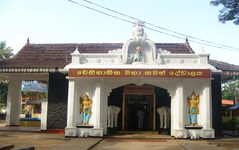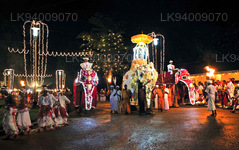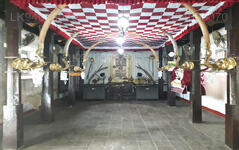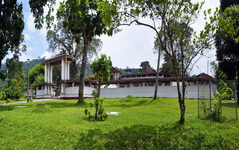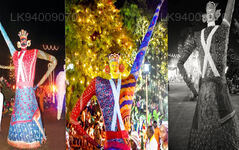
Ratnapura City
Ratnapura: City in Sri Lanka renowned as the "City of Gems," famous for gemstone mining, lush landscapes, and cultural heritage.
Maha Saman Devalaya
The Sabaragamuwa Maha Saman Devalaya is considered the main Devalaya of deity Saman except for the Shrine at top of Sri Pada. The Ratnapura Fort and a church was built on the ground of Saman Devalaya around 1618-1620 by the Portuguese
King Keerthi Sri Rajasinghe (1747 – 1781) of Kandyan Kingdom captured the Ratnapura, destroyed the church and the Portuguese Fort at Ratnapura and built a temple (Maha Saman Devalaya) on the site. It is believed that the current temple is the temple built by King Keerthi Sri Rajasinghe.
THIS TEMPLE, dedicated to one of the four guardian deities of the island, There is some evidence to suggest that there was an ancient devale (described as a “Hindu temple”) here before Portuguese times.
The present devale is approached from the north east up a long processional way, and then through a gateway with an adjacent bo tree, which leads into a large rectangular outer enclosure. It is here that the elephants are dressed for the perahera procession during the annual festival.
Saman Devalaya Perahera
The annual procession at Ratnapura Saman Devala held in the month of September is considered second, only to the Kandy perahera in grandeur and the observances of the age old customs and rituals.
After the Basnayake Nilame – the chief lay custodian – decides on the auspicious days and times for the various events, a hierarchy of traditional performers of duties are informed about their responsibilities before the commencement of the pageant.
First in the series of events is the planting of the kup to coincide with an auspicious moment. It is followed by the kumbal Perahera held over a period of five nights and the main Perahera for another five days. Deity Saman is symbolized by an arrow which receives a prominent place in the arrangement of the pageant and rituals associated therewith.
Many of the highlights associated with the main pageant held during the last five days enhance the grandeur of this great religious festival. Monks from Kottimbuwala Rajamaha Vihara chant Pirith before the commencement of the procession which is heralded by firing of gun shots.
The traditional dance of Perahera
The rituals performed by the potter and the females provide great inspiration to the devotees. A huge two-faced figure of Mahababa with a serene face at one side and a fierce one at the other is a remarkable feature. It is believed that this figure depicts the character of King Rajasinghe I who was considered to be fierce, like a demon in anger, and pleasant like a deity to the virtuous.
Various dancers representative of the major dance forms – Kandyan, Sabaragamuwa and Low country add colour and grandeur to the procession. The culmination of the pageant is the water cutting ceremony on the last day at Kalu Ganga which flows near the Devale.
【Text by Lakpura™. Images by Google, copyright(s) reserved by original authors.】

